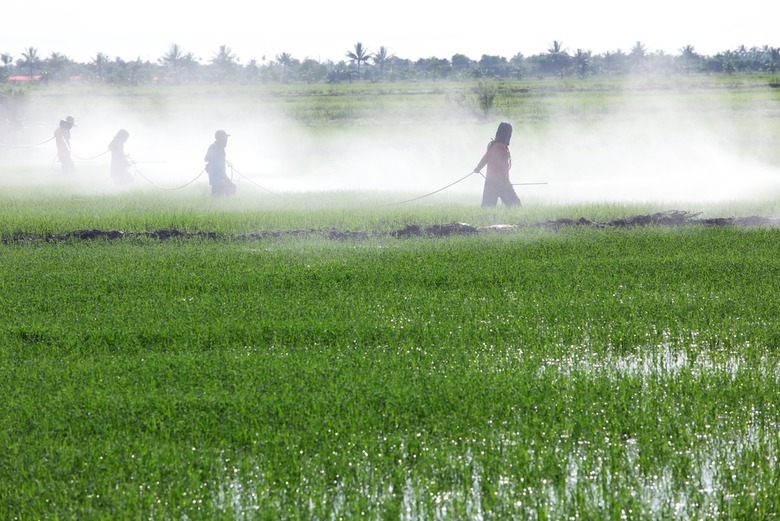EPA Considers Ban On Widely Used Pesticide Linked To Neurological Damage
The Environmental Protection Agency is considering a ban on chlorpyrifos, an insecticide that is often used to treat crops like corn, soybeans, Brussels sprouts, cranberries, broccoli, cauliflower, and fruit and nut trees. The pesticide has been in use since 1965.
Chlorpyrifos is widely used on American farms, particularly in California, which allots for 25 percent of the insecticide's annual use, according to The Associated Press. In recent years, chlorpyrifos has been linked to neurological damage in those exposed to the chemical.
One recent study showed that children who had been exposed to the insecticide in the womb had tremors, and the National Resources Defense Council points to nearly 300 cases of chlorpyrifos-related illnesses reported in California between 2001 and 2013. Known symptoms of exposure include "nausea, dizziness, confusion, and at very high exposures (e.g., accidents or major spills), respiratory paralysis and death," according to an EPA fact sheet.
"Based on EPA's current analysis, there do not appear to be risks from exposure to chlorpyrifos in food, but when those exposures are combined with estimated exposure from drinking water in certain watersheds, EPA cannot conclude that the risk from aggregate exposure meets the Federal Food, Drug, and Cosmetic Act (FFDCA) safety standard," the organization said in a statement. "EPA has determined that safe levels of chlorpyrifos may be exceeded in parts of the United States for people whose drinking water is derived from some small vulnerable watersheds where chlorpyrifos is heavily used. If the tolerances are revoked, EPA would cancel the associated food uses of chlorpyrifos."
The proposed rule by the EPA will accept comments from the public for the next 60 days.
